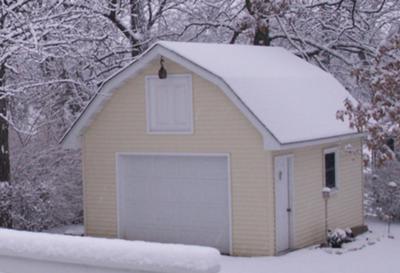Frequently Asked Questions on Damp in Sheds
by John Coupe
(Admin)
Questions on Damp in Sheds – I get asked a lot of questions about Damp in sheds and so I have pulled together a lot of these onto one page for you to browse. Hopefully, you can find an answer to your question in amongst these.
If not please visit my Shed Questions page and ask away.
My only request before you do this is to take the time to submit several pictures and write a good summary your problem. I am keen to help but if I just get a one-liner saying - “I need some help with my shed roof!” it takes a lot longer to help you get to the root of the problem and find a solution.
I look forward to hearing from you if you don’t find an answer to your question below:
Return to Questions about controlling dampness in sheds.
How to protect stuff from damp in my shed.
by Matt
(Southern England, UK)
John, I have a shed provided by our housing association. It's basically a long block, brick built building, that has been split into 6 sheds that have a concrete base. Each brick shed has a wooden door. I think the roof is possibly a type of concrete covered in roofing felt. There's no ventilation I can see, other than the fact that the door doesn't sit perfectly in the frame.
In the shed, I currently store my bass amplifier, which has a paper cone (15inch). I've made a plastic cover for it but am obviously concerned about damp. The reason I don't keep it inside the flat is that it weighs 50kg and I'm on the 4th floor, and there's no lift.
What can I do to improve the damp proofing in the shed, that doesn't involve structural work (which we're not allowed to do)? I wondered if I could build an insulated frame sitting inside the shed - plastic membrane on the floor, thin insulation on the walls and door?
Any help much appreciated.
Regards
Matt
Comments for How to protect stuff from damp in my shed.
|
||
|
||
Damp proofing shed floor
by Ronda
(McHenry, IL. USA)
We have an existing shed. It was built using wood timbers cemented into place and has a wood floor. There was no moisture barrier put into place below and there is really no way of getting under the shed. It is the size of a 1 car garage with a full attic. we insulated the celing of the first floor so the attic is good but the main floor everything gets moldy in the damp seasons. What can we do to solve this problem and prolong the life of our shed?
Return to Shed floor
Comments for Damp proofing shed floor
|
||
|
||
|
||
|
||
|
||
|
||
Shed for storing magazines!
by Colin
(Surrey)
Hi, I need to buy a shed for storing my large colection of magazines. Obviously I am worried about keeping them in good condition. I have seen advertised 'garden buildings' that come with built-in insulation (e.g. those made by Lifespace, Solus, Waveney) but compared to conventional sheds they are very expensive!
Is it necessary to buy something like this, or would adding insulation ourselves (fibreglass?) be good enough?
I hope you can offer me some helpful advice! Thanks in advance!
Comments for Shed for storing magazines!
|
||
|
||
|
||

Keep in touch with our monthly newsletter
Shed Building Monthly





